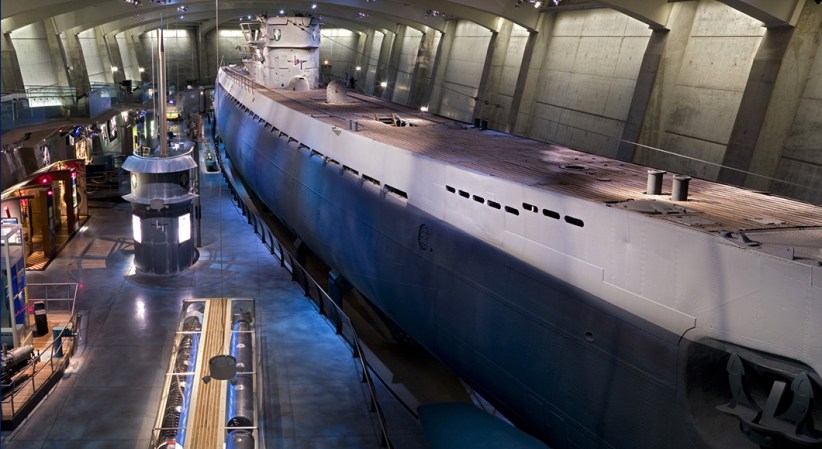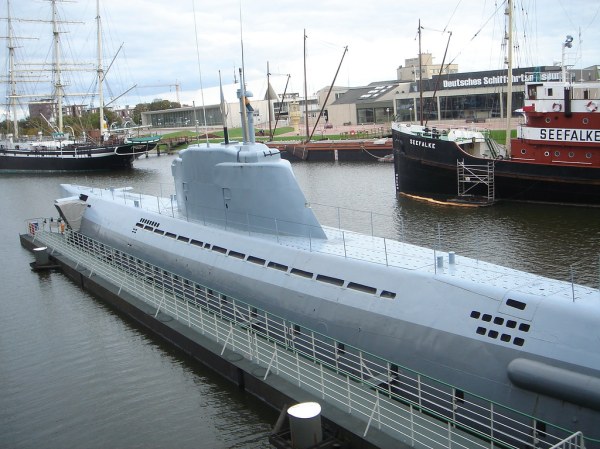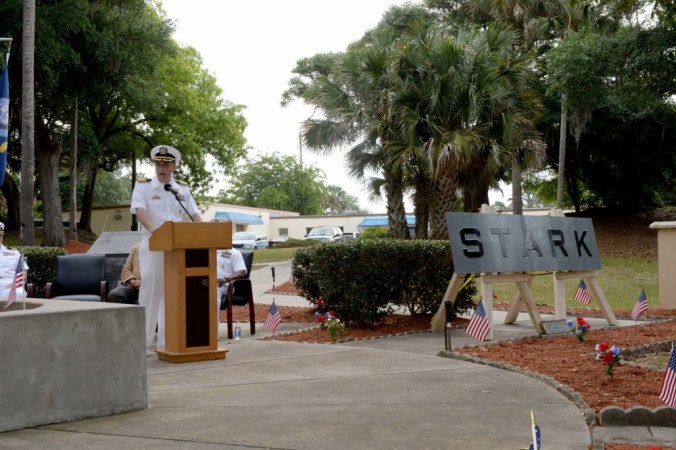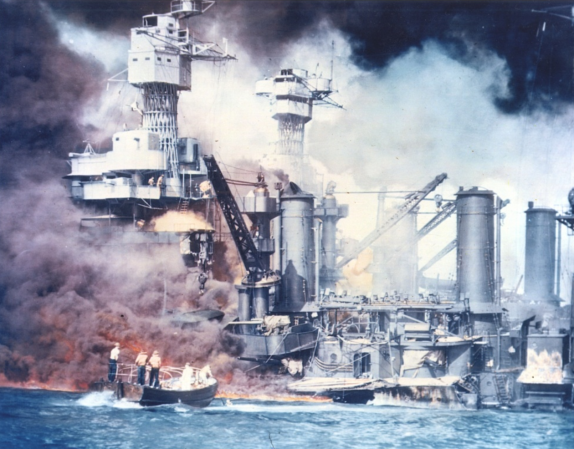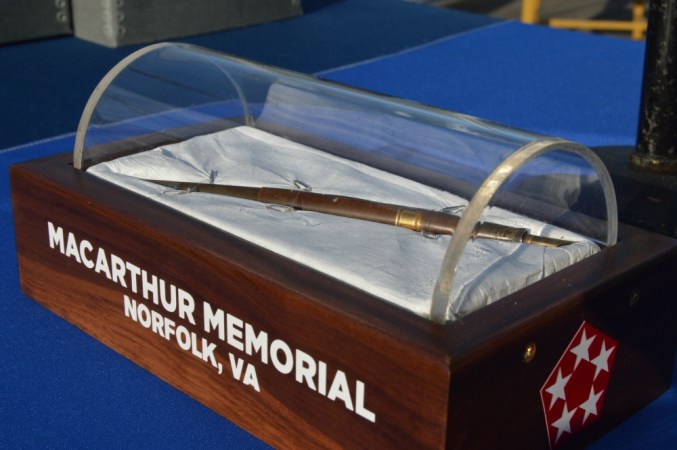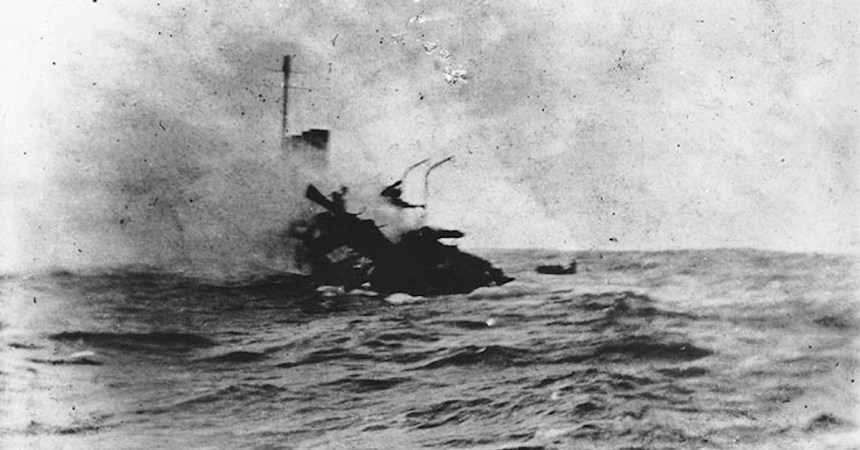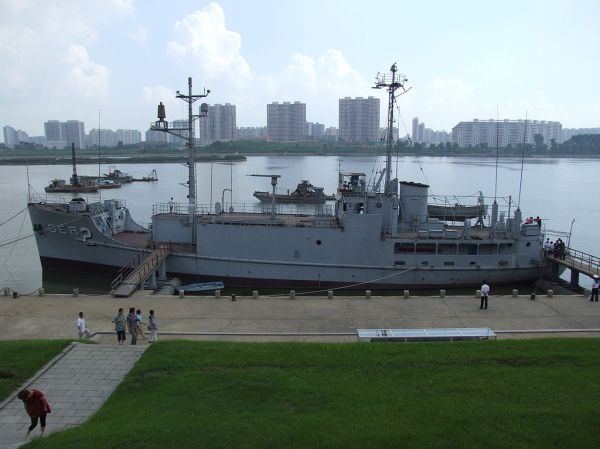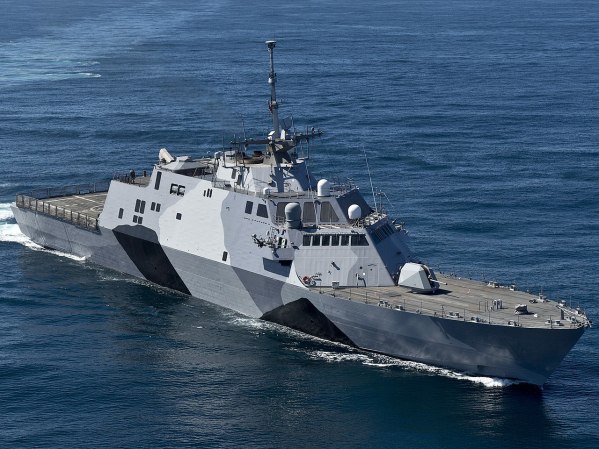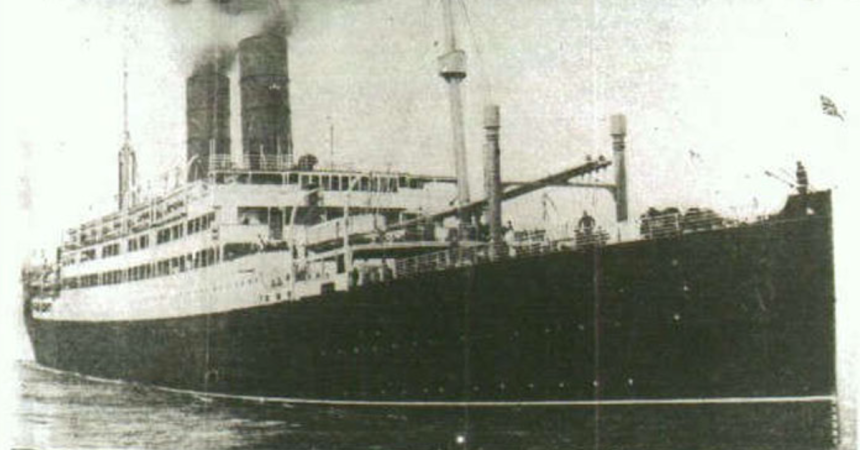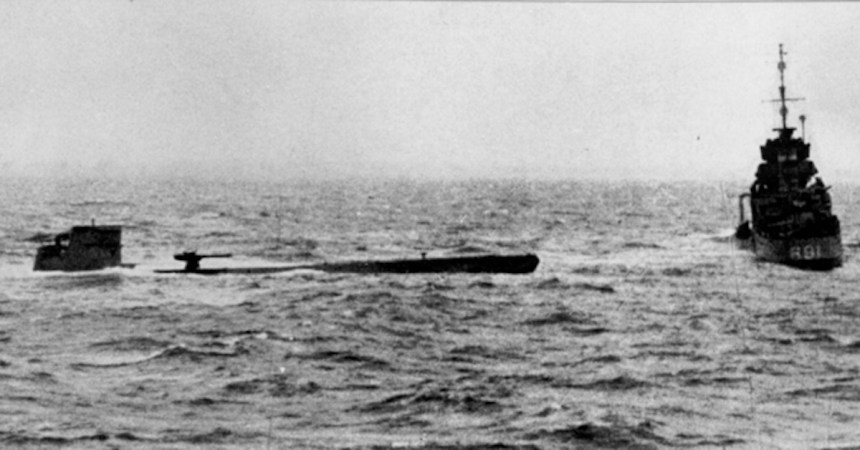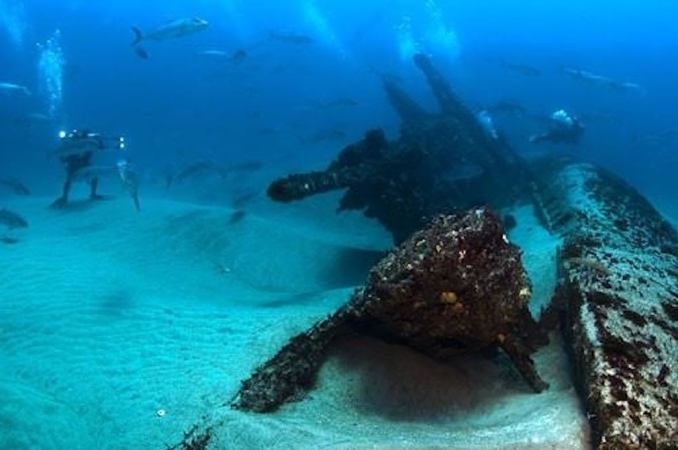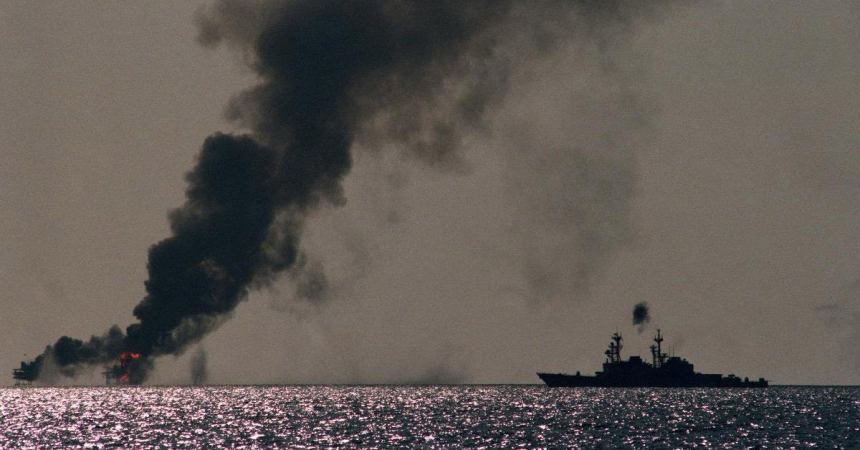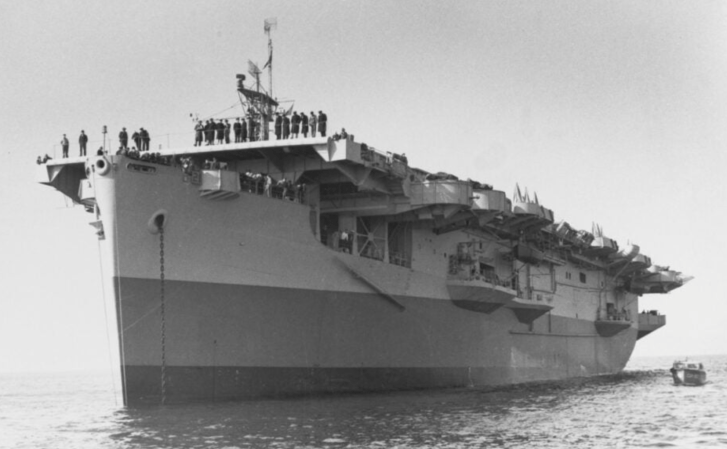In the early days of the U.S. Navy, boarding and capturing enemy vessels was common practice. As naval firepower increased, the practice became to sink the other ship rather than capture it. Then in 1944 with some daring actions–and a stroke of luck–the U.S. Navy captured a German U-boat, its first such accomplishment since the War of 1812.
The German U-boat, U-505, was known as a hard-luck case, though it could also be said that it was a boat that wouldn’t sink. On her fourth patrol of the war, a British Hudson bomber scored a direct hit in an attack run so low that the explosion caused the plane to crash as well. The captain gave the order to abandon ship but the technical crew insisted on staying aboard to save the vessel. After two weeks of repairs, the U-boat was able to limp back to Europe and had the honor of being the most heavily damaged submarine to ever return to port.
Despite numerous abortive cruises due to French saboteurs, U-505 finally sailed for another patrol; this time, however, it earned another dubious honor when her skipper became the first–and only–known submarine commander to crack and commit suicide while under attack.
Finally, in the spring of 1944, fully-repaired and under the command of a new captain, U-505 set a course for the coast of West Africa for an 80-day war patrol.
Also heading towards West Africa during that time was Task Group 22.3, commanded by Captain Daniel Gallery from his flagship, the escort carrier USS Guadalcanal. Task Group 22.3 was employed as an anti-submarine Hunter-Killer group as part of the Battle of the Atlantic. Along with Guadalcanal the group also consisted of five destroyer escorts.

During Task Group 22.3’s second Hunter-Killer cruise, Captain Gallery had an important revelation. A long-running battle with U-515 ended when the U-boat was too heavily damaged to continue and surfaced so its crew could abandon ship. As the Germans abandoned ship, the task group blasted it until it finally sank. Gallery realized that if he had a trained boarding party ready they could quickly board a scuttled U-boat and save it from sinking. As the task force returned to port, Gallery began making preparations for just such an event during the next sortie.
On June 4, 1944, Task Group 22.3 found the perfect prey. As U-505 was returning from its war patrol, it inadvertently stumbled right into the middle of the task group. The sub tried to dive but the clear waters allowed the Guadalcanal’s aircraft to maintain visual contact and use their guns to mark the submarine’s location in the water. The task group’s destroyer escorts then moved in for the kill.
USS Chatelain began its attack by launching its Mark 4 Hedgehog anti-submarine weapon at the U-boat. When those failed to score a hit, Chatelain repositioned and dropped a pattern of depth charges against the sub.

A U-505 surviving crewmember, Hans Goebeler remembered the attack vividly. “They really gave it to us,” he said. “The explosions were the biggest I ever heard.” The depth charges caused severe internal and external damage to the U-boat. With all hope seeming lost, the commander gave the order to surface and abandon ship–just as Gallery had anticipated.
As the sub came to the surface, the American ships and aircraft raked it with gunfire, hoping to quickly drive off the German sailors before they could properly scuttle the ship. The fire had the intended effect. The Americans killed one German and wounded two others as the rest of the crew quickly jumped overboard to escape the maelstrom of bullets.
Normally the American destroyer escorts would have moved in to finish off the U-boat and send it to Davy Jones’ Locker but Captain Gallery’s decision to try to capture a German submarine called for a different action. As the Germans fled the sinking sub, a nearby destroyer escort, the USS Pillsbury, launched a boarding party to rescue the stricken vessel. The other ships picked up their new German POWs.
Led by Lt. Albert David, the boarding party plunged through the conning tower and into the submarine. It was a race against time–the ship sinking beneath them was rigged with scuttling charges that could explode at any moment. The boarding party quickly found the open sea strainer, an 11-inch pipe pouring water into the submarine, and capped it. To their relief, the party found that in their haste to abandon ship, none of the Germans had taken the time to arm the scuttling charges. Most of the submarine was below the water with just the front portion and most of the conning tower still visible. The sub was hanging on by an air bubble in one of the dive tanks.
The boarding party quickly secured the biggest prize of all: U-505’s log books, charts, codes, and its Enigma machine. The ship was still in danger of sinking, however, and with little working knowledge of German submarines, the task of salvaging U-505 fell on the task group’s chief engineer, Commander Earl Trosino. As Gallery would later say when the situation was the most precarious, “thanks to Trosino’s uncanny instinct for finding the right valves, and his total disregard for his own safety, we succeeded in saving U-505.”

With the submarine secured, the task group took it under tow and headed for Bermuda. The intelligence gained from the capture of U-505 was invaluable. By maintaining strict secrecy of the operation, the Germans were never aware that the Americans had captured their U-boat intact with its precious cargo of information. The entire task group was awarded a Presidential Unit Citation for their actions. Lt. David was awarded the Medal of Honor for his part in leading the boarding party.




